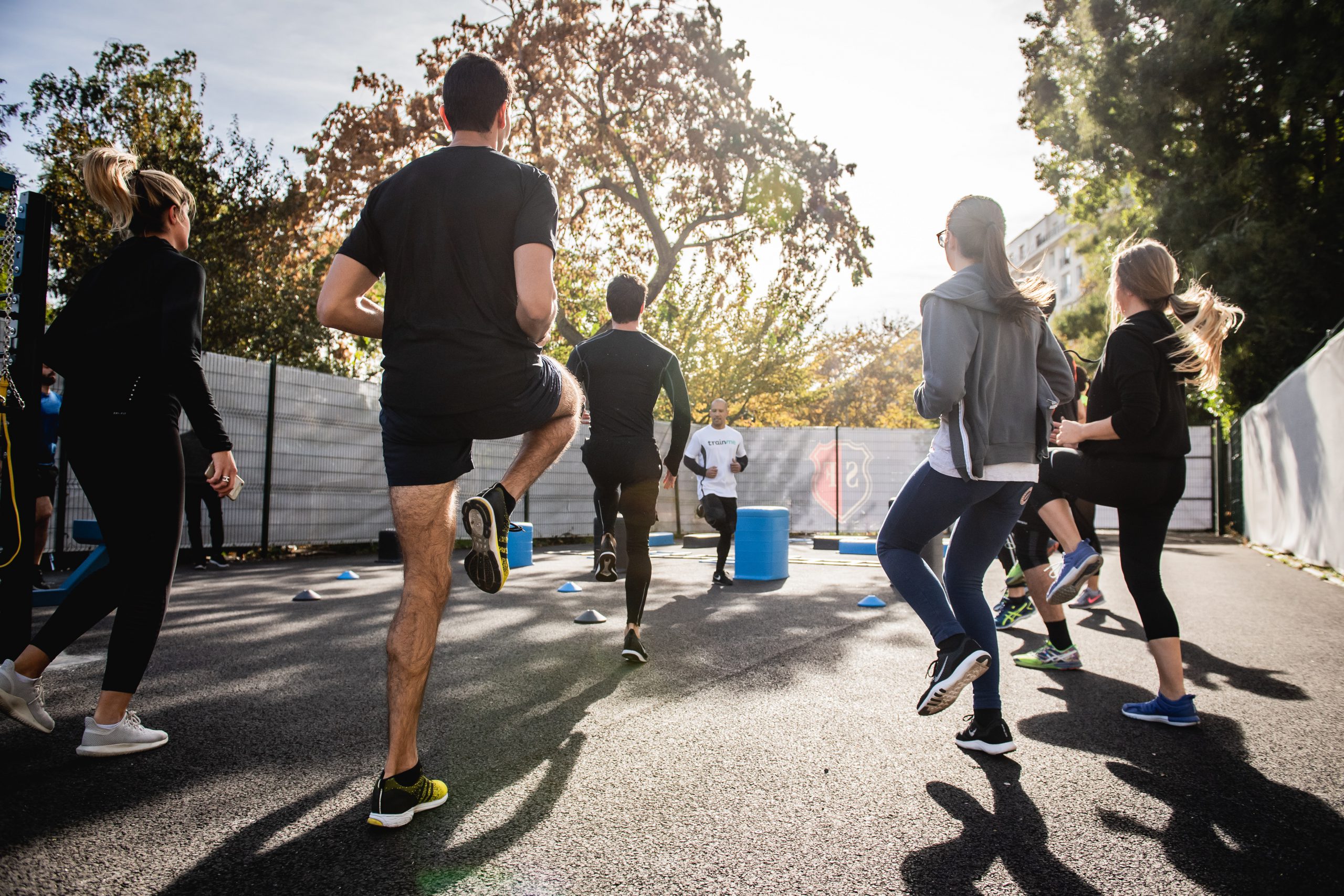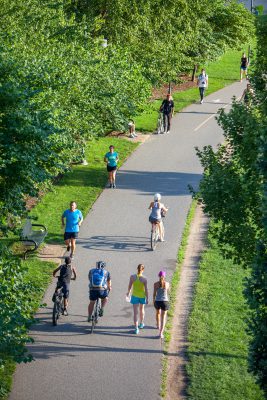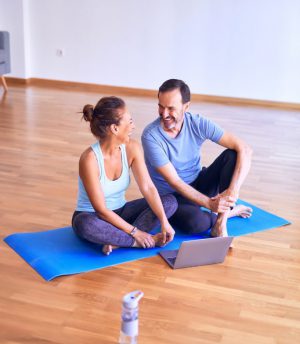
How to Exercise Safely From a Sports Medicine Physician
With longer hours of daylight and lots of sunshine you may be getting back into a fitness routine this summer. Or, you may be an avid exerciser who never misses out on your next challenge. Regardless of how active your lifestyle is, we all can benefit from incorporating exercise safety into our fitness routines. Exercise injuries, especially heat-related injuries in the summer, are often due to mis-steps in our training that can be fixed with a little intentionality and correction.
We asked Dr. Leah Concannon, a sports medicine physician with the Sports Concussion Program, Spine Center, and Sports Medicine Center at Harborview and a UW Associate Professor of Rehabilitation Medicine, to share her tips for exercise safety and injury prevention. Dr. Concannon’s expertise is the treatment of sports related injuries in athletes of all ages and levels. As a former collegiate gymnast, Dr. Concannon knows just how important exercise safety is to any fitness goal.
What are the 3 main safety considerations for exercise right now?
1. Injuries
 Doing too much too fast is the easiest way to get an injury. Start slowly and listen to what your body is telling you. Remember to plan at least one rest day a week and try to cross train to avoid overusing any specific muscle groups or joints.
Doing too much too fast is the easiest way to get an injury. Start slowly and listen to what your body is telling you. Remember to plan at least one rest day a week and try to cross train to avoid overusing any specific muscle groups or joints.
2. Heat related illness and hydration
Anyone is susceptible to heat related illness, even experienced athletes, but those new to exercise may be more vulnerable. Time your workouts to cooler parts of the day, stay out of the sun, wear light colored clothing, use sunscreen, and stay well hydrated. On hot days, drink before you are thirsty, and drink at least 1-2 cups before exercise. Water is generally sufficient, but sports drinks can be helpful if you will be exercising for prolonged periods of time. On very hot days, decrease the time and intensity of your workout.
Signs of heat exhaustion include: headache, feeling lightheaded or dizzy, fatigue, nausea, muscle cramps, cold/clammy skin. Any of these are a sign to stop immediately, drink water and find a cool place to rest. Do not continue exercising that day.
Heat stroke is a medical emergency. Signs include: confusion, headache, lack of sweating, rapid heartbeat, possible loss of consciousness. If you are exercising with someone with these signs, call 911 and cool them down as quickly as possible by moving to a cool place and using ice packs or cold compresses. A cold water or ice bath is the most efficient for lowering body temperature, but requires supervision.
3. COVID-19 considerations
The best thing you can do to protect yourself is to get vaccinated if you haven’t already. Exercising outdoors carries very little risk, while exercising indoors with others has higher risk, especially for unvaccinated people. If you choose to do this, be sure to follow local guidelines regarding masks and distancing, and don’t be afraid to ask a gym what their cleaning protocols are and about their ventilation systems.
How can someone safely start a new workout routine?
First, pick something that you will enjoy so that you’ll stick with it over the long term. Start slowly. If you are new to exercise, start with about 15 minutes most days of the week, and then increase weekly or every other week. The American College of Sports Medicine (ACSM) recommends 150 minutes of moderately intense exercise per week, with at least two days of strength training as well. But if you haven’t been exercising in a while, it’s best to work up to this slowly to avoid an injury. Even exercise in 10 minute bursts can count towards this goal.
If you have had a long hiatus from exercise due to the pandemic, do not expect to be able to do what you used to do right away. As a general guide, start at no more than 50% of what you were previously doing, and advance by no more than 10% per week. This will help you to safely build your way back to your previous level or to your new goal, without burning out or injuring yourself. There’s nothing worse than an injury getting in the way of your training!
What does a proper warm up and cool down look like?
To warm up for a cardio day, you can do your chosen activity at a reduced pace and intensity for 5 to 10 minutes. To warm up for strength training, do a similar light cardio warm up. A cool down is done similarly. If you plan on stretching, it’s best to do this after either your warm up or cool down, rather than before you start movement all together.
What is most important to preventing exercise related injuries?
As discussed above, the best way is to start slowly and build slowly, listen to your body, cross train, and plan rest days. Give yourself grace if things don’t go exactly to plan. It’s helpful to have an exercise plan to keep you focused, but there is no shame in modifying the plan if it is not working for your body on any given day or week.
 When to see a doctor about underlying conditions and exercise safety.
When to see a doctor about underlying conditions and exercise safety.
If you have known heart disease, diabetes or kidney disease, talk to your doctor prior to beginning exercise to determine if you need any further evaluation. Per the ACSM, any of the following symptoms either at rest or during exercise should also prompt a discussion with your physician prior to beginning exercise:
- Chest pain or pressure
- Neck, jaw or arm pain
- Shortness of breath
- Unusual fatigue
- Heart palpitations
- Dizziness or a feeling like you are going to faint
- Ankle swelling or overnight shortness of breath
We want to thank Dr. Concannon for sharing her knowledge with us. There are so many wonderful benefits that come from exercising, but it’s important to exercise safely. Above all us, remember to choose an activity you’ll enjoy, listen to your body, and take it slow.